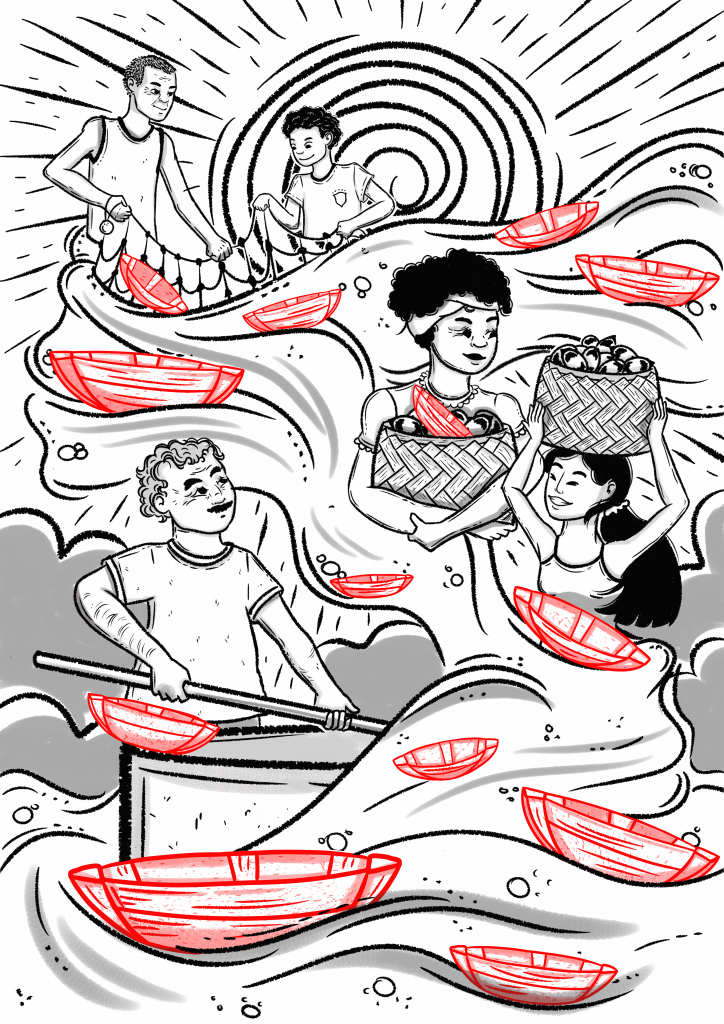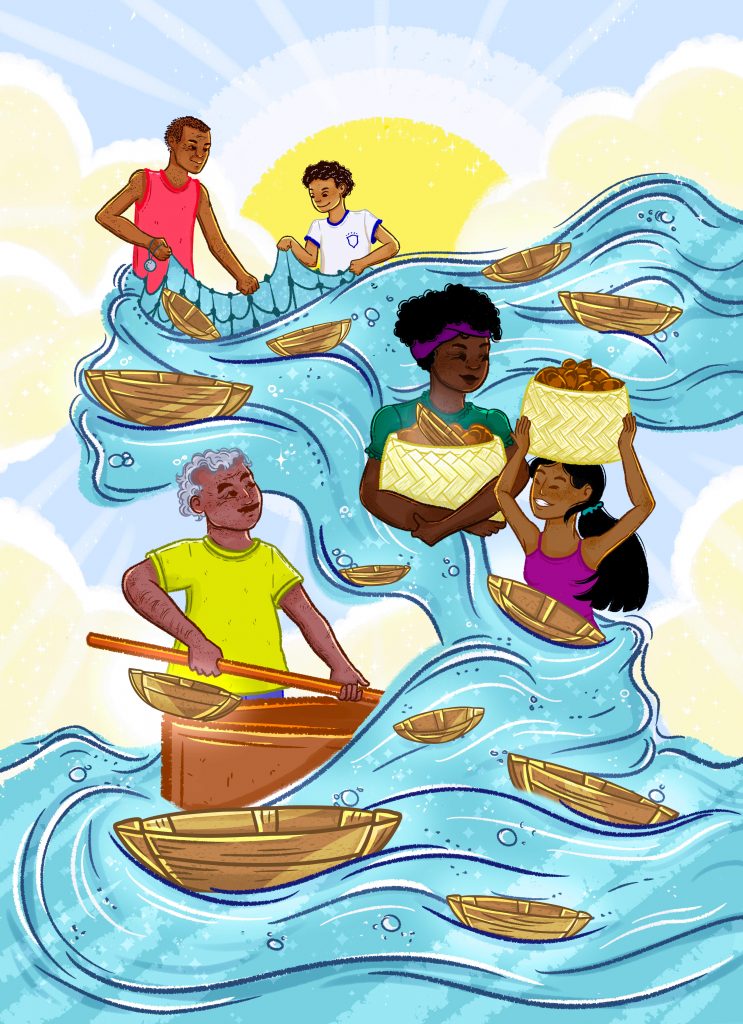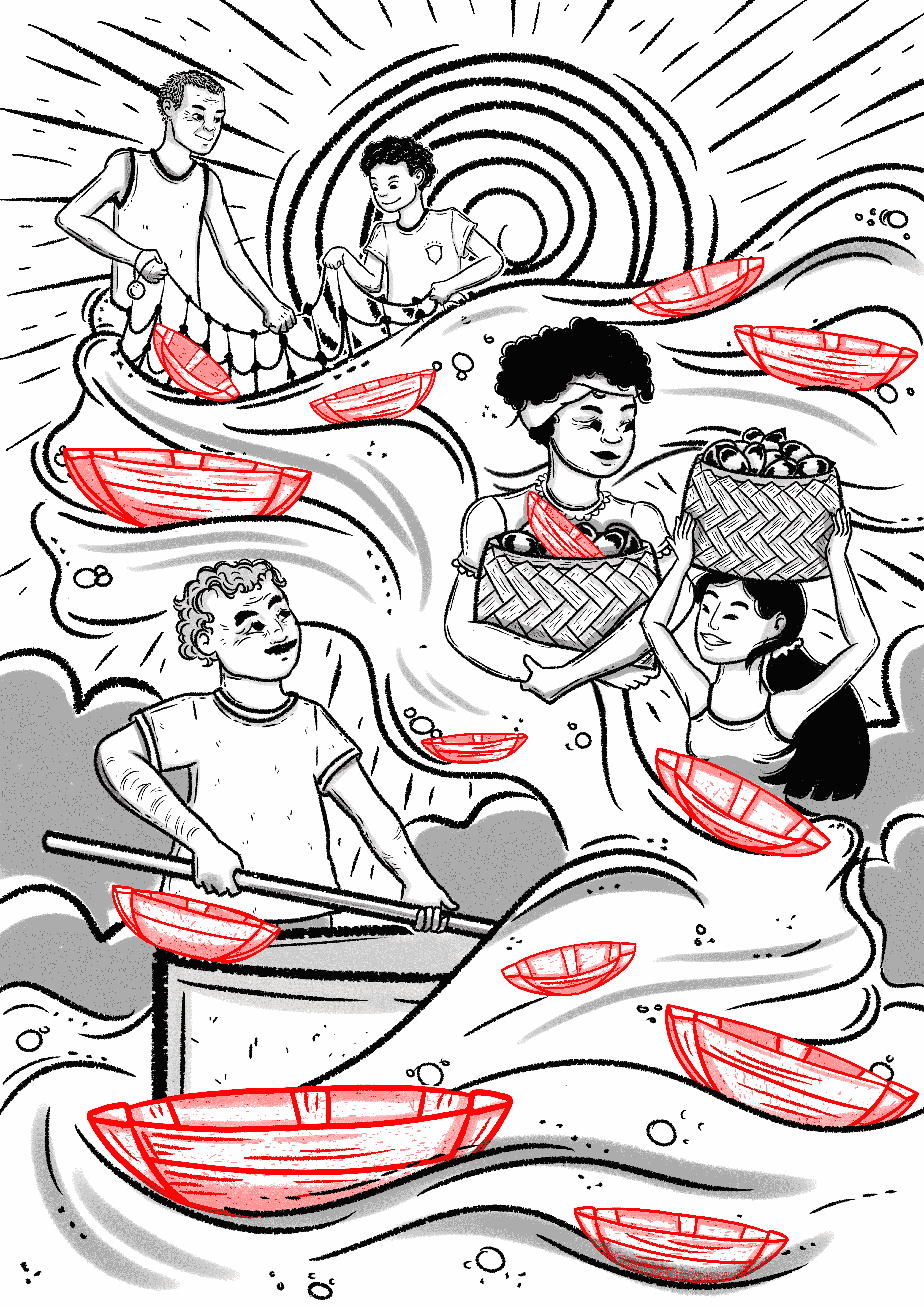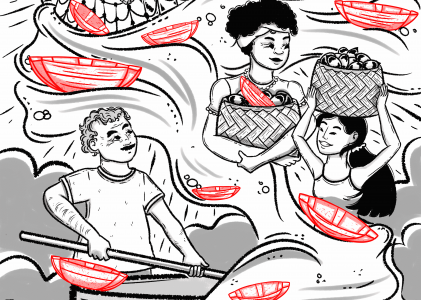Diane Pereira Sousa, President, Baixada Maranhense Community Foundation

When a few people want to cross a river they might use a canoe, but if the people are many, one canoe is not enough. Community philanthropy happens when the canoe that is being used ceases to be enough. To cross the river with more people, you need connected canoes moving together and looking out for each other. This has been our guiding philosophy in Baixada Maranhense.
Baixada Maranhense is a region in the State of Maranhão in North-Eastern Brazil. Baixada Maranhense is loosely translated as the “low lands of Maranhão.” It is made up of large low plains that flood in the rainy season, eventually creating huge lagoons. The region represents the largest set of lake basins in North East Brazil. During the rainy season, the lakes overflow, creating floods that sometimes cut off the roads, thus, the necessity of canoes. In the dry season, the region is turned into a large expanse of dry fields. Neither season is ideal for much economic activity. Maranhão is considered the poorest state in Brazil and is an important focus of the State’s development work.
The Baixada Maranhense Community Foundation (BMCF) was born out of the “CIP Young Citizen” movement of 2003 and an integrated series of development projects promoted by Formacao – Centro de Apoio à Educação Básica in ten cities (Arari, Cajari, Penalva, Matinha, Olinda Nova, São João Batista, São Vicente Ferrer, São Bento, Palmeirândia and Peri Mirim).
Community Philanthropy happens when the canoe that is being used ceases to be enough, so we must start thinking about several other canoes.
In 2013, after ten years of intense work in the region, a group of Baixadeiros got together to discuss what the region’s future might look like. They wanted to support the development of sports, communication, agricultural ecology, and social justice in the region.
One of the community foundation’s first strategies was to create a campaign called “Anyone-who-loves-the-Baixada-is-an-Ambaixadeiro.” The campaign allowed people to contribute in two ways: as a Volunteer Ambaixadeiro, where in-kind donations and skills were given such as marketing specialists or legal advisors; and as a Donor Ambaixadeiro, for those who could support by giving a financial contribution of any amount.
In 2022, the Ambaixadeiro campaign changed, with support from the Comuá Network (formerly known as the Brazilian Network for Social Justice Philanthropy), to the “Productive Baixada”, where innovative and promising community development ideas, projects, and businesses were mapped and connected to the Donor Ambaixadeiro and the Volunteer Ambaixadeiro initiatives. This allowed BMCF to weave together a network of people doing community development work with people with skills and resources within the same community. “It was an investment in people, social capital, and networks crucial for the territory’s development. People investing in each other.” Today, the territory is filled with Baixadeiro Ambassadors, like Jailson Mendes in São João Batista, Francilda Fonseca in São Vicente de Ferrer, Samara Volpony in Arari and Roselia Oliveira in São Bento.

During the floods that plague Baixada Maranhense every rainy season, the lakes overflow and become connected by a system of wandering canals that serve as routes between cities and villages, sometimes replacing the roads. Drawing from this reality, Regina Cabral and I like to say: “When we think about community philanthropy, we think of a river and everything that moves around it. Canoes, people, fish, land cultivation, sails. Anyone who lives near the river knows what has to be done for the fishing, cultivation, and sailing to be productive. All these things work together and not in isolation.”
Community philanthropy happens when the canoe that is being used ceases to be enough, so we must start thinking about several other canoes: the fish, land cultivation, and sails which all contribute to sustainability and a good living on the river. A combination of various community resources. With several canoes, more people with various profiles and different dreams can fish from the same river (of community philanthropy), so that others can be fed. Canoes working together are better than boats with just one captain. The various canoes distribute power and decision-making influence in a way that creates income at scale and inclusive development. To cross the river with more people you need the connected canoes of community philanthropy moving together and looking out for each other. On a river, the community knows what has to be done. There are creative strategies and connections in the daily lives of its people that are there to use.
Canoes working together are better than boats with just one captain. The various canoes distribute power and decision-making influence in a way that creates income at scale and inclusive development.
I like to think of the sea as well. The sea that connects all continents. The sea reaches the river and the river runs into the sea. The sea represents the major funds. The river contains the community funds. Some rivers come from the sea, and some come from the lakes. When I put my feet in the sea or lake, I feel connected to the people who step into the same water, far, far away. The other person and I, working together for the canoes to keep sailing on the rivers.
Diane Pereira Sousa is based in Brazil. She is a specialist at “poetic bridges,” a process to merge dreams and reality, and is the President of the Baixada Maranhense Community Foundation. A version of this article was originally published by the Comuá Network (formerly known as the Brazilian Network for Social Justice Philanthropy) and has been translated from Portuguese to English by Dayse Boechat.

